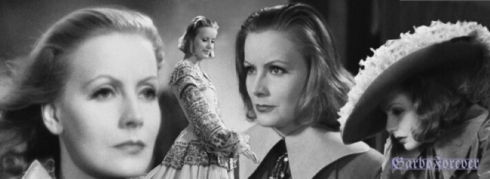
In 1933, prior to the release of Queen Christina, nobody outside of the MGM Studios executive offices knew whether Garbo, the Queen of the Silver Screen was ever going to return to film.

The year before, Garbo and Louis B. Mayer had slugged it out in contract negotiations that changed forever the power structure of the Hollywood studio system. Afterward, Garbo left for Sweden on an extended vacation, while L.B. Mayer licked his wounds. The public knew nothing of the outcome, and MGM decided to keep it that way capitalizing on the public interest of their favorite movie star and the future of her career.

Garbo left America in 1932 knowing she’d be back. She had scored a lucrative, 2-picture deal with her studio, and more important to her had creative control than ever before. Garbo could pick her next 2 projects, including the director and her co-stars. It was more power than any other star, male or female had ever had. It was either that, Garbo threatened Mayer, or her leaving Hollywood forever. The old Mogul blinked.

Garbo was at the peak of her career. She had arranged for Mayer to create her own production company within the MGM studio system. It was a stroke of genius having her own team, who would do nothing but Garbo projects. And their very first production would be the ambitious historical biopic – Queen Christina of Sweden.

Loose on historical fact, the lavish production was nonetheless a starring vehicle like none other. Garbo’s public persona was at the center of the saga about the solo Queen who abdicated her throne in order to live as a normal, average woman. Garbo embodied the role as a declaration of her own independence from the studio system. She even got to wear pants in the role, which was unheard of in 1933!

Garbo insisted that her old, silent movie co-star John Gilbert play opposite her as the Spanish Envoy and love interest to Queen Christina. L.B. Mayer all but had a heart attack. He hated John Gilbert and had tried to destroy the actors career when he stumbled into sound film several years before: Mayer had Gilbert’s voice electronically raising 2 octaves – making him sound ludicrous. But Mayer knew there would be no getting around Garbo now. His female star had all the control, and with Garbo’s star ascending around the world – he had no choice but to sign Gilbert.

Garbo got her way, and Mayer was able to capitalize on her return to the silver screen. The film was marketed as “Garbo’s Triumphant Return” to the movies. The film made back it’s money and more, grossing over $600,000 in it’s initial 1933 run. Although MGM would declare a loss by cooking their books, it would be discovered decades after Mayer’s death that the film was actually a financial success for the studio.

Regarded as one of Garbo’s greatest roles, Queen Christina was a romantic vision of the Queen who valued life, art, music and creativity over war and domination. It would propel her dominance over the world cinema for the rest of the decade – and continue Garbo’s reign in Hollywood. Mayer and MGM would go on to make millions off its mercurial star, and allowed them to dominate film in Europe as well as America as can be seen by the foreign language one sheets and movie posters advertising the film:
Later regarded as Garbo’s signature role, Queen Christina was ahead of it’s time especially for the portrayal of women in film. Garbo had a female love interest at the beginning of the film (alluding to her rumored lesbianism). Her royal court wished her to marry in order to produce an heir, though she demurred (as did the real Queen Christina). Best of all, Garbo showed her contempt for men and their penchant for making war. This would become a re-occurring theme in her career and is at the center of my upcoming debut novel, Looking For Garbo, available now for pre-order and to be released on May 7, 2019.

















